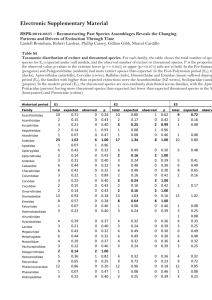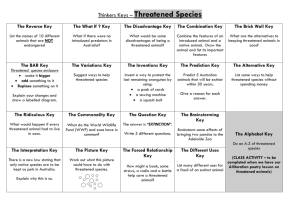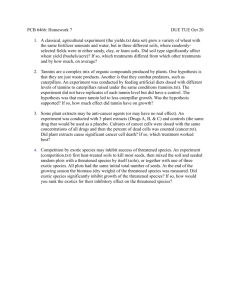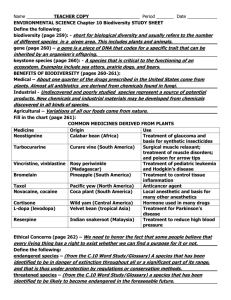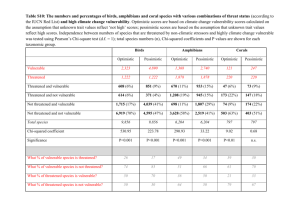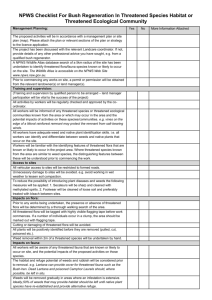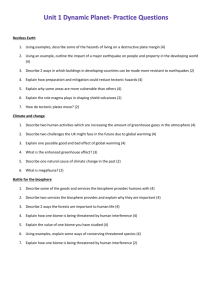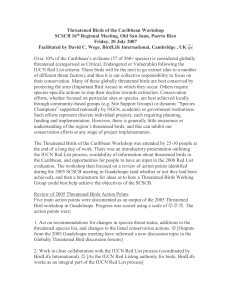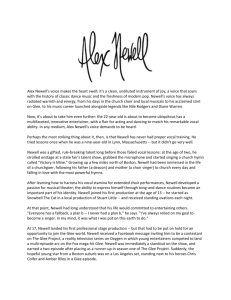GOODGA NATURE RESERVE THREATENING PROCESSES
advertisement
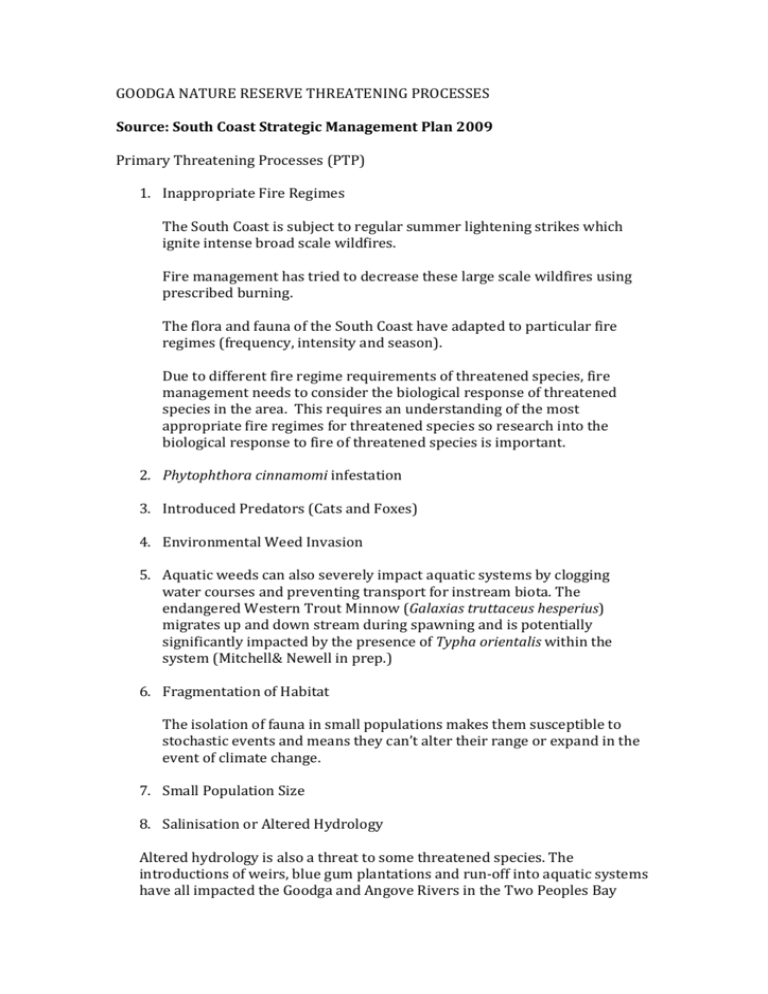
GOODGA NATURE RESERVE THREATENING PROCESSES Source: South Coast Strategic Management Plan 2009 Primary Threatening Processes (PTP) 1. Inappropriate Fire Regimes The South Coast is subject to regular summer lightening strikes which ignite intense broad scale wildfires. Fire management has tried to decrease these large scale wildfires using prescribed burning. The flora and fauna of the South Coast have adapted to particular fire regimes (frequency, intensity and season). Due to different fire regime requirements of threatened species, fire management needs to consider the biological response of threatened species in the area. This requires an understanding of the most appropriate fire regimes for threatened species so research into the biological response to fire of threatened species is important. 2. Phytophthora cinnamomi infestation 3. Introduced Predators (Cats and Foxes) 4. Environmental Weed Invasion 5. Aquatic weeds can also severely impact aquatic systems by clogging water courses and preventing transport for instream biota. The endangered Western Trout Minnow (Galaxias truttaceus hesperius) migrates up and down stream during spawning and is potentially significantly impacted by the presence of Typha orientalis within the system (Mitchell& Newell in prep.) 6. Fragmentation of Habitat The isolation of fauna in small populations makes them susceptible to stochastic events and means they can’t alter their range or expand in the event of climate change. 7. Small Population Size 8. Salinisation or Altered Hydrology Altered hydrology is also a threat to some threatened species. The introductions of weirs, blue gum plantations and run-off into aquatic systems have all impacted the Goodga and Angove Rivers in the Two Peoples Bay Nature Reserve which contains the threatened Western Trout Minnow (Mitchell & Newell in prep). Other Threatening Processes 1. Other Introduced or Native Invasive Species An invasive species is one that occurs, as a result of human activities, beyond its accepted normal distribution and threatens valued environmental, agricultural or other social resources (Commonwealth of Australia 2008). Such species are a threatening process for threatened species through competition, predation and/or habitat alteration. Competition for nesting hollows and killing of nesting females and chicks by feral Honey Bees is considered one of the most significant threats to Baudin’s and Forest Red-tailed Black Cockatoos breeding and survival (Chapman 2007). a. Fish Invasive fish are a significant issue for aquatic diversity. Although currently not in the system, the introduction of non-native fish eg: Gambusia, into the Goodga Creek or Angove River systems would have a devastating impact on the endangered Western Trout Minnow (Mitchell & Newell in prep.). Past practices of introducing non-native fish species for recreation fishing are highly regulated by the Department of Fisheries though not banned. 2. Recreational Activities Such activities may impact threatened species through the spread of Phytophthora cinnamomi through vehicle or foot access, trampling, spread of weeds, wildflower and faunal collection and feeding of wildlife (Kelly et al. 2003). 3. Illegal Shooting Illegal shooting is recognised as a threat for the Baudin’s and the Forest Red-tailed Black Cockatoos (Chapman 2007). Illegal killing of these species has been known to occur because of damage to pome fruit crops (Baudin’s) or damage to blue gum plantations (Forese Red-tailed). 4. Other Plant Pathogens 5. Animal Diseases The introduced cestode, Ligula intestinalis, is currently a significant threat to the endangered Western Trout Minnow (Mitchell & Newell in prep. The cestode does not kill individuals, but causes deformities that reduce mobility, increasing its vulnerability to bird predation. There is no known control or eradication for the parasite.
